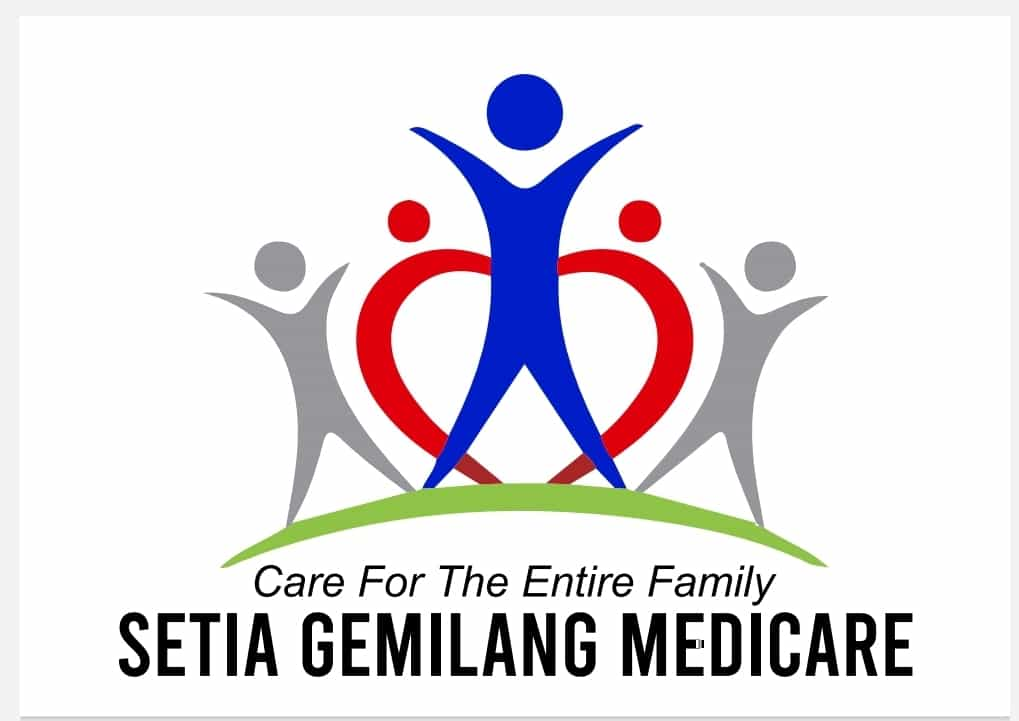Affordable Stem Cell Therapy for Joints in Malaysia: What You Need to Know
.png)
Stem cell joint treatments in Malaysia have emerged as a promising avenue for individuals seeking innovative solutions for various orthopedic and degenerative joint conditions. This revolutionary approach harnesses the body's natural healing capabilities, offering a potential alternative to traditional surgeries or long-term pain management. Malaysia has become a sought-after destination for stem cell therapy due to its advanced medical infrastructure, highly skilled specialists, and competitive pricing. This blog post aims to provide a comprehensive guide to understanding the price range for stem cell joint treatments in Malaysia, alongside addressing key questions that arise for those considering this regenerative medicine option.
What is the typical cost range for stem cell joint treatments in Malaysia?
"Stem cell joint treatments in Malaysia for orthopedic conditions generally cost between RM 15,000 and RM 30,000 (approximately $3,200 to $6,400 USD), with some clinics offering mesenchymal stem cell injections from RM 8,000 per session."
The price of stem cell joint treatments in Malaysia can vary significantly based on several factors, including the type of stem cells used, the complexity of the condition, the number of sessions required, and the specific clinic's reputation and facilities. For general joint and orthopedic issues like osteoarthritis of the knee or sports injuries, the cost typically falls within the RM 15,000 to RM 30,000 range. However, for more extensive or severe conditions that demand higher cell concentrations or multiple treatments, the total cost could escalate to RM 120,000 or even RM 150,000.
It's important to note that these figures often include the initial consultation, diagnostic tests, the stem cell harvesting and processing, the injection procedure, and sometimes even follow-up care. Some clinics may offer mesenchymal stem cell (MSC) injections starting from a lower price point, around RM 8,000 per session, which might be suitable for less severe cases or as part of a multi-session treatment plan.
What factors influence the cost of stem cell joint therapy in Malaysia?
"Several factors influence the cost of stem cell joint therapy in Malaysia, including the type and source of stem cells, the specific medical condition being treated, the number of required treatment sessions, the clinic's reputation and facilities, and the doctor's expertise."
The variability in stem cell treatment costs can be attributed to several key elements. Firstly, the type of stem cells used plays a significant role. Autologous stem cells, derived from the patient's own body (such as from fat tissue or bone marrow), are generally less expensive than allogeneic stem cells, which come from a donor (e.g., umbilical cord blood or placenta). The processing and expansion of these cells in a laboratory also contribute to the overall cost.
Secondly, the medical condition being treated and its severity directly impact the price. A minor sports injury might require a single, localized injection, while advanced arthritis affecting multiple joints or requiring higher cell dosages will naturally incur a higher cost. The number of sessions necessary to achieve optimal results is another crucial factor; some conditions may benefit from multiple injections spread over time. Lastly, the clinic's reputation, the advanced technology it employs, its accreditation, and the expertise of the doctor performing the procedure can all influence the final price. Established clinics with state-of-the-art facilities and internationally trained specialists often command higher fees.
Is stem cell therapy for joints safe in Malaysia?
"Yes, stem cell therapy for joints in Malaysia is generally considered safe when administered by trained and licensed medical professionals at clinics regulated by the Ministry of Health Malaysia (MOH) and adhering to strict ethical and safety protocols."
Safety is a primary concern for anyone considering stem cell therapy. In Malaysia, the regulatory framework for regenerative medicine is evolving, with the Ministry of Health (MOH) providing guidelines for its use. Reputable clinics offering stem cell joint treatments are typically registered with the MOH and adhere to stringent safety protocols. This includes ensuring the stem cells are sourced ethically, processed in certified laboratories to prevent contamination, and administered by qualified doctors with experience in regenerative procedures.
While generally safe, like any medical procedure, there are potential risks, albeit rare. These can include infection at the injection site, allergic reactions, temporary pain or swelling, or, in very rare cases, unintended cell growth. Patients are advised to choose clinics that provide transparent information about their procedures, cell sources, and safety track record. A thorough consultation with the doctor is essential to discuss individual risks and benefits.
What types of joint conditions can be treated with stem cell therapy in Malaysia?
"Stem cell therapy in Malaysia is commonly used to treat a range of joint conditions, including osteoarthritis (especially of the knee and hip), rheumatoid arthritis, sports injuries (such as ligament tears and tendonitis), and degenerative disc disease in the spine."
Regenerative medicine approaches like stem cell therapy have shown promise in treating various musculoskeletal conditions that involve cartilage, bone, ligament, or tendon damage. The most common joint condition addressed is osteoarthritis, a degenerative joint disease characterized by the breakdown of cartilage, leading to pain, stiffness, and reduced mobility. Stem cell injections aim to promote cartilage regeneration and reduce inflammation in affected joints like the knee, hip, shoulder, and ankle.
Beyond osteoarthritis, stem cell therapy is also explored for:
- Rheumatoid arthritis: To modulate the immune response and reduce inflammation.
- Sports injuries: Such as anterior cruciate ligament (ACL) tears, meniscus tears, rotator cuff tears, and various forms of tendonitis (e.g., Achilles tendonitis, patellar tendonitis) where stem cells can aid in tissue repair and accelerate healing.
- Degenerative disc disease: While not strictly a joint, the spine's intervertebral discs can also benefit from stem cell injections to promote repair and reduce pain.
- Avascular necrosis: A condition where bone tissue dies due to a lack of blood supply, often affecting joints.
What is the typical recovery time after stem cell joint treatment?
"The typical recovery time after stem cell joint treatment varies depending on the individual, the treated condition, and the type of procedure, but most patients can expect to resume light activities within a few days and gradually return to full activity over several weeks to months as the regenerative process takes effect."
After a stem cell injection for a joint condition, the immediate recovery is usually relatively quick. Patients may experience some mild soreness, swelling, or bruising at the injection site, which typically subsides within a few days. Doctors usually advise a period of rest or reduced activity for the first 24-48 hours.
The true regenerative effects of stem cell therapy are not immediate. Stem cells work by signaling the body's natural healing mechanisms and promoting tissue repair, which is a gradual process. Patients often report initial improvements in pain and function within a few weeks, with more significant and sustained benefits becoming apparent over three to six months. Full recovery and the maximum therapeutic effect can take up to a year. Physical therapy and rehabilitation are often recommended as part of the post-treatment plan to maximize results and aid in strengthening the treated joint.
How long do the effects of stem cell joint treatments last?
"The effects of stem cell joint treatments can vary, but many patients experience sustained pain relief and improved joint function for one to several years, with some studies showing benefits lasting five years or more, depending on the individual's condition and lifestyle."
The longevity of stem cell therapy's effects is a common question, and it's important to understand that results can differ from person to person. While it's not a permanent "cure" in all cases, many patients report significant and long-lasting improvements. For conditions like osteoarthritis, the goal is to reduce pain, improve mobility, and potentially slow down further joint degeneration.
Anecdotal evidence and emerging research suggest that the benefits of stem cell joint treatments can last for one to several years. Factors influencing the duration of effects include the severity of the initial condition, the patient's age, overall health, lifestyle (e.g., activity level, weight management), and adherence to post-treatment care. Some patients may opt for booster injections after a few years to maintain the benefits. It's crucial to have realistic expectations and discuss the expected duration of effects with your treating physician.
What should I expect during a stem cell joint treatment consultation in Malaysia?
"During a stem cell joint treatment consultation in Malaysia, you should expect a comprehensive medical history review, a physical examination of the affected joint, an assessment of diagnostic imaging (like X-rays or MRI), a discussion of the suitability of stem cell therapy for your condition, an explanation of the procedure, and a transparent breakdown of costs."
A thorough consultation is a crucial first step when considering stem cell joint treatment. The doctor will begin by taking a detailed medical history, including any previous joint injuries, existing medical conditions, and current medications. A physical examination will assess the range of motion, stability, and pain levels of the affected joint. You will likely be asked to bring any relevant diagnostic imaging, such as X-rays, MRI scans, or ultrasound reports, which help the doctor accurately assess the extent of the joint damage.
Based on this comprehensive evaluation, the doctor will discuss whether stem cell therapy is a suitable option for your specific condition. They will explain the different types of stem cells that could be used (e.g., bone marrow-derived, adipose-derived, or umbilical cord-derived MSCs), the source of these cells, and the specific procedure involved. This is also the time to ask about the expected outcomes, potential risks, and the recovery process. Finally, a clear and transparent breakdown of the stem cell joint treatment cost will be provided, including what is covered in the package.
Are there different types of stem cells used for joint treatments in Malaysia?
"Yes, different types of stem cells are used for joint treatments in Malaysia, primarily mesenchymal stem cells (MSCs) derived from sources such as the patient's own bone marrow (bone marrow aspirate concentrate - BMAC), adipose (fat) tissue, or allogeneic sources like umbilical cord blood or placental tissue."
The choice of stem cell type can depend on the specific joint condition, patient preference, and clinic expertise.
Autologous Stem Cells: These are sourced from the patient's own body, eliminating the risk of immune rejection.
- Bone Marrow-Derived Mesenchymal Stem Cells (BM-MSCs): Harvested from bone marrow, typically from the hip bone. This procedure is done under local anesthesia. BM-MSCs are known for their chondrogenic (cartilage-forming) potential.
- Adipose-Derived Mesenchymal Stem Cells (AD-MSCs): Obtained from a small fat sample, usually through a mini-liposuction procedure. AD-MSCs are abundant and relatively easy to harvest. They are also known for their anti-inflammatory properties.
Allogeneic Stem Cells: These are derived from healthy donors, often from perinatal tissues such as umbilical cord blood or placental tissue.
-
Umbilical Cord-Derived Mesenchymal Stem Cells (UC-MSCs): These are "younger" cells with high proliferative and differentiation capabilities, and they have very low immunogenicity, meaning they are less likely to be rejected by the recipient's immune system. They are readily available and do not require a harvesting procedure from the patient.
The decision on which stem cell type to use will be made in consultation with your doctor, considering your specific needs and the clinic's protocols.
What is the difference between stem cell therapy and PRP for joint pain?
"Stem cell therapy involves injecting undifferentiated cells that can differentiate into various cell types and have significant regenerative and anti-inflammatory properties, whereas Platelet-Rich Plasma (PRP) therapy uses concentrated platelets from the patient's own blood to deliver growth factors that stimulate healing and reduce inflammation but do not contain live stem cells."
Both stem cell therapy and PRP therapy fall under the umbrella of regenerative medicine and are used to treat joint pain, but they work differently.
- Stem Cell Therapy: This treatment involves introducing live stem cells into the affected joint. These cells have the unique ability to self-renew and differentiate into specialized cells (like cartilage cells, bone cells, or soft tissue cells), potentially repairing damaged tissue directly. They also release powerful growth factors and anti-inflammatory cytokines, promoting a healing environment and modulating the immune response. Stem cell injections are generally considered a more potent regenerative treatment, often used for more significant tissue damage or degenerative conditions.
- Platelet-Rich Plasma (PRP) Therapy: PRP involves drawing a small amount of the patient's blood, processing it to concentrate the platelets, and then injecting this concentrated plasma into the injured area. Platelets are rich in growth factors that stimulate cell proliferation, tissue repair, and reduce inflammation. While PRP can accelerate healing and reduce pain, it does not introduce new, undifferentiated cells into the joint that can replace damaged tissue in the same way stem cells might. PRP is often used for milder joint pain, tendonitis, or as a complementary treatment. The cost of PRP treatment in Malaysia is also significantly lower, typically ranging from RM 1,000 to RM 4,000 per session for joints.
Are there any restrictions or guidelines for stem cell therapy in Malaysia?
"Yes, stem cell therapy in Malaysia is subject to regulatory guidelines from the Ministry of Health (MOH), particularly under the Medical Devices Act 2012 and the Private Healthcare Facilities and Services Act 1998. Clinics offering these treatments must be licensed and adhere to specific ethical and quality standards."
Malaysia has been progressively developing its regulatory framework for regenerative medicine, including stem cell therapy. The Ministry of Health (MOH) plays a crucial role in overseeing these treatments to ensure patient safety and efficacy. Key guidelines include:
- Licensing and Accreditation: Clinics and hospitals offering stem cell treatments must be licensed by the MOH and meet specific standards for facilities, equipment, and personnel.
- Ethical Considerations: The use of stem cells must adhere to ethical principles, particularly regarding the source and handling of cells.
- Quality and Safety: Strict protocols for the harvesting, processing, and storage of stem cells are mandated to ensure their quality, viability, and safety, minimizing risks of contamination or adverse reactions.
- Clinical Trials: While some stem cell therapies are available commercially, many are still considered experimental and may only be offered within the context of approved clinical trials. It's important for patients to understand the status of the treatment they are receiving.
Patients should always verify that the clinic they choose is reputable and operating within the MOH's guidelines for stem cell therapy in Malaysia.
Can stem cell treatment completely cure arthritis?
"While stem cell treatment can significantly reduce pain, improve joint function, and potentially slow the progression of arthritis, it is not typically considered a complete cure for advanced degenerative conditions like osteoarthritis, which involve irreversible cartilage damage."
For conditions like osteoarthritis, which involve the gradual breakdown of cartilage and structural changes in the joint, stem cell therapy aims to promote regeneration of damaged tissues, reduce inflammation, and alleviate symptoms. Many patients experience substantial relief from pain and a marked improvement in their quality of life, allowing them to engage in activities they previously found difficult.
However, in cases of severe arthritis with extensive cartilage loss, stem cell injections may not fully regenerate the joint to its original, healthy state. Instead, they can act as a powerful tool to manage symptoms, delay or avoid joint replacement surgery, and improve overall joint health. The effectiveness can also depend on the type and severity of arthritis, the patient's age, and their body's inherent regenerative capacity. It's more accurate to view stem cell therapy as a highly effective management and regenerative strategy rather than a definitive "cure" for advanced arthritis.
What is the success rate of stem cell joint treatments in Malaysia?
"The success rate of stem cell joint treatments in Malaysia varies depending on the specific condition being treated, the type of stem cells used, and individual patient factors, but many studies and clinical reports indicate a success rate ranging from 70% to 90% for significant pain reduction and functional improvement in conditions like knee osteoarthritis."
Measuring the success rate of stem cell therapy can be complex, as "success" can be defined differently (e.g., pain reduction, improved mobility, avoidance of surgery, or objective evidence of tissue regeneration). However, for joint conditions, particularly osteoarthritis, outcomes are often positive.
- Osteoarthritis: Numerous studies and patient experiences suggest that a significant majority of patients undergoing stem cell therapy for knee osteoarthritis experience substantial pain relief and improved joint function. Success rates often range from 70% to 90% for these outcomes.
- Sports Injuries: For ligament and tendon injuries, stem cell treatments can accelerate healing and improve the strength and integrity of the repaired tissue, leading to high success rates for return to activity.
It's important to discuss expected success rates specific to your condition with your doctor, as individual results can vary based on factors such as the severity of the damage, overall health, and adherence to post-treatment recommendations. Reputable clinics will provide data and realistic expectations.
Can stem cell therapy help avoid joint replacement surgery?
"For many individuals with moderate to severe joint degeneration, stem cell therapy can potentially help avoid or delay joint replacement surgery by promoting tissue repair, reducing pain, and improving joint function, thereby postponing the need for invasive surgical intervention."
One of the significant appeals of stem cell joint treatments is the possibility of avoiding or at least delaying major surgical procedures like total knee or hip replacement. When conventional treatments like physical therapy, medications, and corticosteroid injections are no longer effective, surgery often becomes the next option.
Stem cell therapy offers a less invasive alternative by aiming to repair and regenerate damaged cartilage and other joint tissues. By reducing inflammation, alleviating pain, and improving joint mechanics, stem cell injections can significantly enhance a patient's quality of life and functional independence, making surgery a less immediate necessity. While it may not be suitable for all cases, especially those with end-stage joint destruction, it provides a viable option for many who wish to explore non-surgical solutions. The decision to pursue stem cell therapy as an alternative to surgery should always be made in close consultation with an orthopedic specialist and a regenerative medicine expert.
Is stem cell therapy covered by insurance in Malaysia?
"Generally, stem cell therapy for joint conditions in Malaysia is not yet widely covered by standard health insurance plans, as it is often considered an experimental or elective procedure. Patients should verify coverage directly with their insurance provider."
As stem cell therapy is still considered a relatively new and evolving field in many regions, including Malaysia, most standard health insurance policies do not yet offer comprehensive coverage for these treatments. Insurers often classify regenerative medicine procedures as experimental, elective, or not medically necessary within their current policies.
Therefore, patients considering stem cell joint treatments in Malaysia should be prepared to cover the costs out-of-pocket. It is highly recommended to contact your insurance provider directly before undergoing treatment to inquire about any potential coverage or reimbursement options. Some clinics may offer financing plans or packages that bundle various services to help manage the financial aspect.
What is the preparation process for stem cell joint treatment?
"The preparation process for stem cell joint treatment typically involves a detailed medical evaluation, including blood tests and imaging scans, followed by a period of avoiding certain medications, and sometimes a temporary dietary adjustment before the stem cell harvesting and injection procedures."
Proper preparation is essential for a successful stem cell joint treatment.
- Medical Evaluation: This begins with a thorough consultation, where your medical history is reviewed, and a physical examination is performed. Diagnostic imaging like X-rays, MRI, or ultrasound scans will be used to assess the severity of your joint condition.
- Blood Tests: These are often conducted to assess your overall health, identify any contraindications, and ensure you are a suitable candidate for the procedure.
- Medication Review: You may be advised to temporarily stop certain medications, such as blood thinners, non-steroidal anti-inflammatory drugs (NSAIDs), or steroids, which could interfere with the stem cell harvesting or the regenerative process. Your doctor will provide specific instructions.
- Lifestyle Adjustments: Depending on the stem cell source, you might be asked to fast for a certain period before the procedure, especially if sedation is involved. Some clinics may suggest dietary changes or supplements to optimize your body's healing capacity.
- Consent: You will be fully informed about the procedure, its risks, benefits, and alternatives, and asked to provide informed consent.
The specific preparation steps will vary slightly depending on whether autologous (from your own body) or allogeneic (donor) stem cells are used, and the method of harvesting.
Are there any alternatives to stem cell therapy for joint pain?
"Yes, there are several alternatives to stem cell therapy for joint pain, ranging from conservative management like physical therapy, medication, and lifestyle modifications to minimally invasive procedures such as Platelet-Rich Plasma (PRP) injections, hyaluronic acid injections, and ultimately, surgical options like arthroscopy or joint replacement."
For individuals experiencing joint pain, a spectrum of treatment options exists beyond stem cell therapy:
Conservative Management:
- Physical Therapy: Exercises to strengthen muscles, improve joint stability, and increase flexibility.
- Medications: Over-the-counter pain relievers (like NSAIDs), prescription pain medications, and anti-inflammatory drugs.
- Lifestyle Modifications: Weight management, activity modification, and assistive devices.
- Heat and Cold Therapy: To alleviate pain and swelling.
Minimally Invasive Procedures:
- Platelet-Rich Plasma (PRP) Injections: As discussed earlier, these injections use concentrated growth factors from your own blood to stimulate healing.
- Hyaluronic Acid Injections (Viscosupplementation): Injections of a gel-like substance that mimics the natural lubricating fluid in healthy joints, commonly used for knee osteoarthritis.
- Corticosteroid Injections: Powerful anti-inflammatory medications injected directly into the joint to provide temporary pain relief.
Surgical Options:
- Arthroscopy: A minimally invasive surgery to diagnose and treat joint problems, such as cartilage debridement or meniscus repair.
- Osteotomy: A bone-reshaping surgery to realign a joint and shift weight away from damaged areas.
- Joint Replacement Surgery (Arthroplasty): The most invasive option, where damaged joint surfaces are removed and replaced with artificial components, typically for severe arthritis when other treatments have failed.
The choice of treatment depends on the severity of the condition, the patient's overall health, and their personal preferences, always in consultation with a medical professional.
How to choose a reputable clinic for stem cell joint treatment in Malaysia?
"To choose a reputable clinic for stem cell joint treatment in Malaysia, look for clinics registered with the Ministry of Health (MOH), that employ experienced and qualified doctors, offer transparent pricing, use accredited laboratories for stem cell processing, and provide clear information on their treatment protocols and patient outcomes."
Selecting the right clinic is paramount for ensuring the safety and effectiveness of stem cell joint treatment. Here are key considerations:
- MOH Registration and Licensing: Verify that the clinic is fully registered and licensed by the Ministry of Health Malaysia to offer regenerative medicine treatments. This indicates adherence to national healthcare standards.
- Doctor's Qualifications and Experience: Research the credentials and experience of the medical team, particularly the doctors who will be performing the stem cell injections. Look for specialists in orthopedics, sports medicine, or regenerative medicine with specific training in stem cell therapy.
- Transparency in Pricing: A reputable clinic will provide a clear and detailed breakdown of all costs involved, with no hidden fees. Be wary of clinics that are vague about their pricing structures.
- Accredited Laboratory Facilities: Inquire about the laboratory where the stem cells are processed and expanded. It should be a sterile, certified facility that follows strict quality control and safety standards to ensure the viability and purity of the cells.
- Source of Stem Cells: Understand where the stem cells are sourced from (autologous vs. allogeneic) and the safety measures in place for sourcing and handling.
- Patient Testimonials and Outcomes: While not the sole determinant, positive patient testimonials and published outcomes (if available) can provide insights into a clinic's success.
- Comprehensive Consultation: The clinic should offer a thorough consultation where all your questions are answered, and you receive a clear explanation of the procedure, risks, and expected outcomes.
- Follow-up Care: Ensure the clinic provides adequate post-treatment care and follow-up to monitor your progress and manage any potential issues.
By diligently researching and asking these questions, you can make an informed decision and choose a reliable clinic for your stem cell joint treatment in Malaysia.
If you're considering stem cell joint treatments in Malaysia or exploring other medical tourism options for your healthcare needs, PlacidWay can connect you with trusted clinics and specialists worldwide. Visit PlacidWay to learn more about comprehensive solutions for your health journey.


.png)




.jpg)









Share this listing